SEND Perspective: Why is it important to introduce intersectionality conversations in UK schools? Exploring seven top tips to address it.
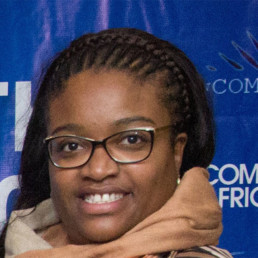
Written by Dilma de Araujo PhD (c)
SEND specialist. She has more than ten years of experience in education working in different educational institutions in the private and public sectors from early years to higher education levels, addressing special education needs; education policy research; gender inclusion and diversity.
‘A year nine boy of Black Caribbean heritage, claiming free school meals and with special education needs to represent a ‘typical’ student likely to be excluded from school.’
(Hawkins, 2019 p.14)
The Special Education Needs field involves a broad spectrum, where intersectional topics and issues such as gender, race and socioeconomic status are susceptible to emerge and often become a matter of great concern if the appropriate support and awareness initiatives are not in place. Hence, reflecting in the above statement by Hawkins (2019), it suggests that there are some significant points concerning financial, social and academic disadvantage and vulnerability indicators that should be addressed differently in our schools and educational institutions, raising awareness and incorporating a culture of dialogue, involving parents, carers and local communities actively in dynamic and creative activities in which different participants and agencies work in constructive partnership and collaboration (e.g. mental health and wellbeing practitioners; Local Authorities representatives, teachers, special education needs coordinators, local and national community activists and artists) aiming to improve not only black students, but all the multicultural and non-multicultural spectrum of school.
Thus, the role of schools, teachers and educational leaders can represent a crucial transformational factor. Hence, schools are designed to be a place where inclusion patterns and strong affinity bows of compassion, understanding and unity are consistently nurtured by adults, children and local communities. Aiming to generate diversity and equal dimensions within our multicultural society. To provide a healthy, safe and inclusive teaching and learning environments. Thus, school leadership teams have the responsibility to explore and address the following issues:
- Bias in the assessment process indicating over, under, misidentification and diagnosis;
- Rational parental response to historical discriminatory bias in the identification;
- Assessing migration’s resulting in different family health and cognitive endowments;
- Differential parenting behaviours and home learning environments;
- Differential experiences of deprivation between ethnic groups (Haye, 2021).
School senior leadership teams’ responsibility towards the implementation of an inclusive and diverse curriculum, programmes, initiatives and cultural activities in order to improve the multicultural perspective in their schools, taking into consideration students mental, cognitive, physical, emotional conditions, needs and circumstances raising the bars towards a positive learning performance and outcomes. In this line of thought, seven essential foundational strategies focus on the improvement of a culture of dialogue and reflective approaches concerning language, thoughts and actions, aiming to clarify different points of view and perspectives related to race, social, cultural inclusion.
Tip 1: Nurturing a culture of dialogue
Promoting dialogues involving racial matters in school can reduce bias, prejudice and pejorative attitudes. Thus, it is important reshape the teaching and learning approaches and behaviours may improve mutual respect, compassion, self and multicultural knowledge. E.g. cooperation involving students, teachers and other school staff. They can organize special pod-cast, webinars and school radio where life testimonials and experiences could address topics related to racial discrimination, macroaggressions and microaggressions.
Tip 2: Promoting reflection in and on action
Applying reflective practices to enhance teaching and learning is crucial to obtain valuable and effective results. Reflecting in-action provides the opportunity to explore and evaluate the academic practice and activities while the learning is taking place, opening the horizons not only for behaviour alignments and changings but also delivering and feedback strategies. Thus, promoting reflection-on-action practices is essential to improve the educational experience and activities built after interaction between teachers and students, mitigating biased attitudes and thoughts during teaching and assessment practices.
Tip 3: Preparing for and welcoming different perspectives
For many children and young people, teachers and school endeavours are the primary sources of information and knowledge. Hence, education institutions should be ready to face and address complex ways of think, behaviour and acting. To introduce potentially challenging conversations about race is essential to give quality training to teachers and staff, organizing regular meetings with parents and local communities and invest in multicultural representation in senior leadership posts in the educational organization.
Tip 4: Identifying students’ mental & emotional, cultural and traumatic journeys
The mental, emotional, cultural and traumatic journeys can impact and determine how children and young people absorb information and knowledge. Therefore, continuous evaluation, assessing, screening and reviewing students is vital to support teachers and students. Teaching practices can improve effectively when students’ needs are identified and properly monitoring based on child-centred approach, diverse curriculum, strong values and beliefs. Consequently, a positive impact can be generated in students’ performance, experiences and outcomes.
Tip 5: Encouraging the use of inclusive and diverse materials, resources and activities
The art of generating a culture of promoting human and racial rights, educational acceptance between adults and children, and constructing positive and dominant social and educational role models becomes the lynchpin of approaching complex topics. As a result, curricula, educational materials, schools’ displays and decorations, learning and leisure activities can be practical tools to combat the nature of privilege, supremacy and oppressive attitudes.
Tip 6: Exploring affective and embodied dynamic of learning
Starting from years early to higher education, recognizing and embracing the critical pedagogy in the daily schooling environment impacting teaching and learning practices through literature and other forms of creative arts aiming to explore and obtain the best of students’ ideas, beliefs, thoughts and aspirations. Learning dynamics could pass through a moment in which creative reflections are based on realistic expectations about a sense of identity, belonging, and existence, thus they could be co-related with all topics, disciplines and courses.
Tip 7: Creating a safe community learning environment
Local communities are an extension of the classroom and learning environment. It is crucial to the communication, interaction and mutual respect between school staff, local organizations and communities. Solid connections can be established through parents, governors and charities. It can help exchange experience, knowledge and update policies and general information.
In this context, addressing race paradigms and curriculum decolonization in the special education needs field can potentially represent a way to liberate bias, discrimination, preconceived thoughts, pejorative language. Additionally, all the changes and adjustments should be raised with the desire to generate productive and constructive empowerment by implementing effective anti-discrimination, SEND race and multicultural policies (also addressing migrants and refugee students). Thus, the field of SEND involving multicultural, race and education can essentially be empowered when individuals from different social, cultural, racial and educational backgrounds join forces not only to change policies but to be the ‘maker, developer and keeper’ of each one of them, aiming to embrace an open door of opportunities to nurturing the teaching and learning best practices.
Reference:
Hawkins, A. (2019) School Exclusion: The Parent Guide. London.
Haye. M, (2021). Special Education Jungle. Finding the racial minority voices in SEND. Retrieved [07/12/2021] from https://www.specialneedsjungle.com/finding-racial-minorityvoicessend/?utm_source=hootsuite&utm_medium=linkedin&utm_term=special+needs+jungle+ltd&utm_content=SocialOroMedia.
PjBL, (2020) Project Based Learning Toolkit. Retrieved [17/12/2021] from https://project-based-learning-toolkit.com/reflection/.
Thurber, A., Harbin, M.B, & Bandy, J. (2019).Teaching Race: Pedagogy and Practice. Vanderbilt University Centre for Teaching, Retrieved [07/12/2021] from https://cft.vanderbilt.edu/teaching-race/.
We (Still) Need to Talk About Gender
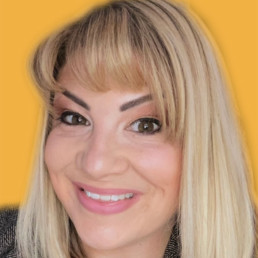
Written by Tracey Leese
Tracey Leese is an assistant headteacher, literacy specialist, parent governor and advocate for women in leadership. Tracey lives in Staffordshire with her two sons and fellow-teacher husband.
I am well aware that the land of gendered identities is an area in which attitudes and assumptions are rapidly changing… and that we are collectively beginning to see gender as more of a spectrum than a fixed binary position. But in our continued efforts to renegotiate our shared understanding of what constitutes gender or identity we can’t assume that female teachers are no longer subject to prejudice.
Women are not underrepresented in teaching – in fact it’s a female-centric profession, but we are underrepresented at every single level of educational leadership – most prevalently at Secondary Headship level. In comparison to some other protected characteristics the issue of gender seems so straight forward. I can see why some people might feel that it’s time to put the issue of gender to the bottom of the priority list.
Similarly, it’s easy to underestimate the myriad reasons why women still earn and lead less in what is supposed to be a truly equal and ethical profession. The motherhood penalty, work/ life balance and women’s desire to work flexibly are all seemingly widely-held reasons for this. Together with my brother Christopher, I recently co-authored Teach Like a Queen: Lessons in Leadership from Great Contemporary Women as an attempt to contribute to the ongoing conversation around diversity within school leadership. Throughout our research for the book we interviewed countless power women and were surprised when recurring themes of self-doubt, imposter syndrome and fear of disapproval emerged. In some instances, these female leaders cited seemingly “small” issues such as wishing to attend their child’s school nativity as reasons why leadership seems unattractive to women.
So, whilst we need to look at who is shaping policy and practice in education, we also need to be bold enough to imagine a future where more schools are ran by women and paid the same as their male counterparts. According to data from NAHT’s Closing the Gender Gap published December 2021, by the age of 60 male headteachers earn £17,334 more than female headteachers.
Our book was inspired (and supported by) the work of #WomenEd who are relentless in their work towards inspiring, empowering and supporting more women into leadership posts, the data tells us that in spite of the brilliant work already underway, that there is still so much work to do. So we absolutely cannot assume that the issue of gender is anywhere near resolved nor that the profession is as equitable as we’d hope.
We are all charged with addressing injustice in education – as leaders, as teachers and as stakeholders. The disproportionate representation of women in leadership and the gender pay gap absolutely amounts to injustice. Our students deserve to attend schools which are led by visionary and diverse leaders. So if a world without gender inequality is an unrealistic destination, I am just happy to be part of the journey.
Teach Like a Queen is out 30th May and published by Routledge: www.routledge.pub/Teach-Like-a-Queen
Conversion therapy is a safeguarding issue for educators
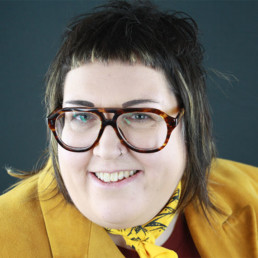
Written by EJ-Francis Caris-Hamer
Mx EJ-Francis Caris-Hamer is a PhD student at the University of Essex within the Department of Sociology. Ze has worked, as a qualified teacher, within the education sector for 20 years, working in both 11-19 sector and Higher Education.
I woke up this morning to read the news that a leaked document shows the government decided to U turn on their commitment to ban conversion therapy. In 2018 the conservative government pledged to ban the practice (Government Equalities Office, 2018) and this was confirmed in the Queen’s speech in 2021 (ITV News, 2022). My heart truly sank hearing this news because it felt as though the U turn was a decision based on political interests rather than an evidence-based health decision (Cramer et al, 2008; Independent Forensic Expert Group, 2020). Fast forward to the BBC News, 46 minutes ago, the updated stance reads that the conservative government now does plan to ban conversion therapy practices in England and Wales for sexual orientation identity, but will remain legal for transgender identities (BBC News, 2022).
What is Conversion Therapy (CT)?
Conversion Therapy (CT) is also known as ‘Cure’ therapy or ‘Reparative’ therapy. It is any “form of treatment or psychotherapy which aims to change a person’s sexual orientation or supress a person’s gender identity” (Stonewall, 2021). These therapies are both unethical and harmful to the person undergoing such treatment and have been condemned by the World Health Organisation and NHS (The Guardian, April 2021) and the United Nations in June 2020 (Stonewall Survey, 2020).
Why is CT a safeguarding issue for educators to be aware of?
The charity Galop surveyed 5000 LGBTQIA+ people in February 2022. They found that 1/3rd of those surveyed suffered abuse from a relative due to their sexual orientation and/or gender identity and for 2/3rds this started when they were under the age of 18, worryingly 30% were under the age of 11 (Galop, 2022). If you identify as trans or non-binary, you are more likely to be subjected to abuse (43%). Abuse includes verbal threats, harassment, facing threats or actual homelessness, and even physical violence. 5% reported relatives subjecting them to conversion practices and the statistic increases to 11% if the person identified as trans or non-binary. Thus, it is essential that the government should also include gender identity when considering a ban of CT.
As educators, it is essential to have an awareness of these statistics and practices, just as we perceive FGM, we should be perceiving the findings from Galop and CT practices as coercion and abuse. As Leni Morris, CEO of the charity Galop, states:
“Anti-LGBTQIA+ abuse from family members is often misinterpreted by statutory services as ‘generational differences’ or having ‘different values’ rather than seeing it for what it is really is – domestic abuse” (Brooks, 2022).
Thankfully and rightly so, today we would never accept such justifications in relation to domestic violence. We need to consider Anti-LGBTQIA+ abuse in the same sense.
What can we as educators do to support young LGBTQIA+ people?
As part of safeguarding, we need to demand from school leaders the time and space to understand the potential harm that families and CT practices can cause the students we teach. We need to recognise the signs of students who could be vulnerable. It is important to recognise that identifying as part of the LGBTQIA+ community is not a safeguarding issue per se, but Anti-LGBTQIA+ abuse including CT practices is a safeguarding concern and the harmful impact it has on students. Even more importantly, students need to be empowered to spot the signs for themselves, or their peers (in support of the ‘no bystander’ agenda). This can only be achieved through awareness.
As a PhD researcher addressing queer inclusion in education, I have heard stories of teachers explaining how students have been threatened with CT by their parents or other authority/guardian figures. As a qualified teacher myself, I also recognise the time constraints that educators have when trying to find the time to research and become increasingly aware of the issues surrounding abuse for LGBTQIA+ young people. As a result, I attach two resource documents as a starting point:
Document one – This is for all staff working in education. This document is to inform you regarding the impact of CT practices and support organisations for young people. This document can be used to inform you as an educator to discuss with students and can be converted into a CPD session under the umbrella term safeguarding.
Document two – Lesson plan which can be delivered to students as part of PSHE/RSE and Citizenship. This increases their awareness and helps them to maintain safeguarding for themselves and their peers regarding CT practices. As educators, we should be campaigning to ensure that such lessons are taught within PSHE.
Sometimes to ensure effective safeguarding practices, we have to embrace our roles as trailblazers, reaching beyond the limitations of current legislation. The right thing to do is always the right thing to do.
References:
BBC News (2022) Conversion Therapy: Ban to go ahead but not cover trans people. Available: https://www.bbc.co.uk/news/uk-60947028 Accessed: 01/04/2022.
Brooks, L. (2022) Third of British LGBTQIA+ people experience abuse by relatives. The Guardian. Available: https://www.theguardian.com/world/2022/apr/01/third-of-young-british-lgbtq-people-experience-abuse-by-relatives Accessed: 01/04/2022.
Cramer, R.J. Golom, F.D. LoPresto, C.T. Kirkley, S.M. (2008) Weighing the Evidence: Empirical Assessment and Ethical Implications of Conversion Therapy, Ethics & Behavior. 18(1), 93-114. DOI: 10.1080/10508420701713014
Galop (2022) LGBTQIA+ Experiences of Abuse from Family Members. Available: https://galop.org.uk/resource/lgbt-experiences-of-abuse-from-family-members/ Accessed: 01/04/2022.
Government Equalities Office (2018) LGBT Action Plan. Available: https://assets.publishing.service.gov.uk/government/uploads/system/uploads/attachment_da ta/file/721367/GEO-LGBT-Action-Plan.pdf Accessed: 27/09/2021.
Independent Forensic Expert Group (2020) Statement on Conversion Therapy. Journal of Forensic and Legal Medicine. 72 Available: https://reader.elsevier.com/reader/sd/pii/S1752928X20300366?token=8C9A2BA4EA68E779A55552541F25EF74A6AC11D3BD64468097DE1C0B9C2A010FAA1064483ABF807884D555610390F27B&originRegion=eu-west-1&originCreation=20220402095216 Accessed 01/11/2021.
ITV News (2022) Exclusive: Government ditches ban on conversion therapy, according to leaked document. Available: https://www.itv.com/news/2022-03-31/exclusive-government-ditches-ban-on-conversion-therapy-leaked-document-shows Accessed: 01/04/2022.
Stonewall Survey (2020) Conversion Therapy and Gender Identity Survey. Available: www.stonewall.org.uk/system/files/2020_conversion_therapy_and_gender_identity_survey.pdf Accessed: 08/09/2021.
Stonewall (2021) Conversion Therapy. Available: www.stonewall.org.uk/campaign-groups/conversion-therapy Accessed: 07/09/2021.
The Guardian (April, 2021) Why are gay conversion practices still legal in the UK? Available: www.theguardian.com/news/audio/2021apr/02/why-is-gay-conversion-therapy-still-legal-uk Accessed: 07/09/2021.
How colourful is your staffroom? Recruiting, retaining and supporting the careers of ethnically diverse teachers
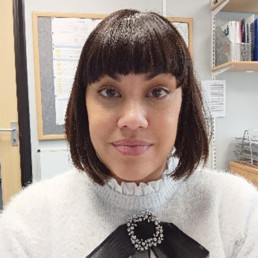
Written by Caroline Lowing
School Improvement Lead for HISP Multi-academy Trust. She was previously a Deputy Headteacher and has worked in Secondary education for 18 years. Caroline co-chairs the ASCL Ethnic Diversity Network and sits on Council for the South East of England. Caroline aims to be a Headteacher in the next 2 – 4 years.
Recently me and my colleague, Gurpall Badesha, presented to a room of school, college and trust leaders at the ASCL Conference on Recruiting and Retaining teachers of colour.
We hugely enjoyed the experience and got some great feedback but that wasn’t the best thing about it. The best thing was that most of the people in the room were white.
Since becoming co-chair of ASCL’s Ethnic Diversity Network I have really tried to carve out the time to be more informed and involved with the ED&I agenda and all of the fantastic organisations out there. I’ve attended meetings and webinars, I have had so many energising conversations and met so many inspirational people.
Even in the short time that I have been involved in this work I have noticed a big change. It is no secret that statistics around the recruitment, retention and career progression of people of colour in education are woeful. The DfE have reported that, in 2019, 85.7% of teachers were white with a staggering 92.7% of headteachers were white. Every way that you look at it, education has a big problem.
However, these statistics and what they mean for the young people that we serve can sometimes stop us in our tracks. The need to delve deeper and deeper into the implications is often overwhelming. I completely understand that we need to be heard and we need to share our own lived experiences. Goodness knows that I have told my own story many times and personal stories about, for example, being repeatedly mistaken for a teaching assistant when you are a Headteacher, are incredibly powerful.
The issue is that, often, the conversation will only go this far. The recent transformation in ED&I in education has been around what can actually do to enact change. This is why I was so pleased to see so many white school leaders in our session. These are people that want change and they want to learn how they can make that change from their position of relative privilege.
Providing solutions is hard. Coming up with ideas that work within every context is impossible. However, the magnitude of the problem coupled with the constant feeling of getting it wrong has led to a feeling of helplessness. When we shared ideas in our session, such as approaching parents from ethnically diverse backgrounds on the school gate to apply for governor roles, it was a joy to see people scribble it down to take back to base. Equally, it was wonderful to hear about schools that already have effective practices. For example, one school tracked its alumni through university and then approached students of colour to support them through joining the profession. I was frantically scribbling, then.
There is absolutely a lot to do to improve the recruitment and retention of people of colour in education but I am genuinely optimistic about the future, not least because school leaders on a mission get things done!
If you would like to know more about ASCL’s Ethnic Diversity Network then please contact Caroline at c.lowing@hispmat.org or she is on Twitter @caroline8779
A Call for Action

Written by Esther Mustamu-Daniels
Esther Mustamu-Daniels has 20 years of teaching experience working in London and the Middle East as a Class teacher, Education officer, Middle Leader and DEI Lead. Currently working at British School Muscat, Esther co-leads the DEI work across the whole school.
I read the most horrific story of a child being sexually assaulted by police in her school. Her teachers did nothing to protect her. Her parents were not called. She was strip searched while in the middle of an exam while on her menstrual cycle. She was not allowed to clean herself after. She was not checked upon to see if she was ok and then she was sent back to her exam to continue it. All by people who are supposed to protect and look after her. All I kept thinking about was what if this was my child? This happened two years ago and the conclusion of the investigation is that ‘racism was likely to have been an influencing factor’.
Unacceptable. The child is now in therapy traumatised by these events and now self harming.
What if this was your daughter? What would you do?
I have been thinking about the reports of Ukraine. How our children feel hearing these reports. Not only of the African students who have been denied entry on to trains and through borders but also of the reporting. How black and brown lives are deemed lesser and how this is normalised in our media. What impact is this having on our children? On all of them? How wars in certain countries are acceptable but in others ‘horrific’. How western media is more sympathetic towards a ‘type’ of refugee. What are we sharing with our children? With all of them? What are we teaching them? What kind of world are we showing them exists?
There are so many stories in the media that show our children the unjust and prejudiced way of the world; how can we counteract this? How can we show them that they are all important? That their lives matter? Put yourselves in their shoes and think about the messages that they are receiving. Think about what you can do to counter that.
If you are a teacher, what do you show your children? The stories and images you choose to share have a huge impact. The authors you share and the lessons you teach that include positive role models, narratives and histories will all have an impact. Are you considering the impact that current events are having on your children? What are you doing to support them? Are you calling out if you see racist or biased behaviour?
If you are a leader, what are you doing to counter these messages? Are you holding spaces for people to share and raise concerns with you? Are you actively trying to ensure that your establishment does not reinforce these messages? What policies do you have in place? What training do you have in place? If you are not aware or are not sure how to navigate these situations, are you seeking support and advice from those who do know?
This is a call for action to break these biases. Are you aware of what some of your children and colleagues may be facing? Are you aware of some of their experiences? Could you even be responsible for some of their experiences? Imagine it was you? Imagine it was your family? What would you do? What will you do? What action will you take? What will you do today to support our future generations and all of our children and adults who are impacted and continue to be impacted by the traumas they witness?
Take action for what is right in whichever area you occupy. We all have the power to take this action and make a difference so that the bias stops. So our children and our communities are safe; psychologically and physically. What will you do?
“You never get a second chance to make a first impression.”

Written by Corinna Richards
An avid crocheter, who also happens to teach, train and lead.
“You never get a second chance to make a first impression.”
— Andrew Grant.
Whether Oscar Wilde or Will Rogers said it first, isn’t for this purpose particularly important. What any student or teacher with a facial disfigurement will tell you, is that it’s true. And the experience of that is hugely important. It’s always been true, but in our “beauty bias” society, looking different – whatever that difference may be, is a big deal. Having a facial or ‘visible difference’ can be excruciating. Our physical appearance matters in first impressions. I’m not saying it should, but from my experience it does.
I blog about this from two perspectives. Firstly, as a person with a congenital facial disfigurement who works in Education and secondly as an EdD student. I’ve just turned 50, and “back in the day” plastic surgery wasn’t as developed as it is now. I had my first plastic, corrective surgery at the age of 11, so I spent my primary school years looking very different. My skull fused together in the womb prematurely which caused my eyes to be extremely wide set and for my nose to be virtually flat with two small nostrils. You can imagine…
However, like everyone, I’ve adapted, over-compensated and fought my way back. I always wanted to teach and that’s what I’ve always done. Apart from three terms in suburbia I’ve always taught in inner city London and only once did I have any issues regarding my face from a pupil. I loved and still do, the diversity of the inner-city, the children were remarkably accepting of my appearance, we were all shapes and sizes together, the issue of ‘normal’ just never seemed too prevalent. The same couldn’t be said for the parents! The suspicion of my appearance was always there, in some heated exchanges a name regarding my appearance would slip out (yawn… I’ve never heard that one before…) and I’ve even had some parents ask my secretary what is wrong with my face! (One of the many reasons I prefer children to adults!)
But last year, I had a bit of a shock.
I am in the third of year of EdD at UEL and I am studying the lived experience of Imposter Phenomenon in Teacher Educators. It’s really interesting, but it wasn’t my first choice. Initially, I wanted to study IP in teachers with visible differences. I couldn’t find any. I didn’t know any. I didn’t know any teachers with facial burns, or severe acne, or disfiguring birthmarks or craniosynostosis… statistically they must exist (I am for one)… but where are they? I then thought about all the pupils I have taught over nearly 30 years… lots of differences, but when did I teach a child who was like me? I don’t think I have. Where are these children and where are the teachers?
Recently, in an updated version of Malory Towers, a young actor, Beth Bradfield, with a visible difference joined the cast, but how often do we see actors with facial burns or scars? Possibly in James Bond, but then of course, only as the villain. I attended my first DEI event last weekend, it was brilliant. Representation matters. Yes, it does. So how do I help other people like me have the courage to stand in front of groups of people and teach. I spent decades of my life trying to hide my face. I was desperate to make my visible difference invisible. It seems like I might not be the only one.
For more information visit:
‘Changing Faces’:
The Katie Piper Foundation: www.katiepiperfoundation.org.uk
Headlines:
Limp Handshakes and Auditory Bias: My Process of Applying for Headship
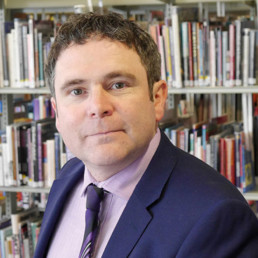
Written by Kevin Carson
Headteacher at The Royal Masonic School for Girls. A learner, an English teacher, and a dad to 2 fab girls. Originated in Liverpool, enjoying living in the Shires.
I have been attending a monthly Diversity, Equity, and Inclusion leadership programme with Diverse Educators since April 2021. It is led by @Ethical_Leader and @Angela_Browne, and it has uplifted, educated, and inspired me every month.
Hannah and Angie are clear and correct that DEI work is safeguarding work, that well embedded DEI makes school communities safer places. The aim of their programme is not to rush into anything in a knee-jerk way, but to listen, reflect, learn, and then start to put together a 3-to-5-year plan that works for each school: carefully planning sustained change over time.
At the start of this week’s session, mention was made of an excellent candidate for headship who so far has not been appointed and there was a feeling that this may at least in part be connected to his race and from that perhaps also in part to his strong accent. This anecdote stayed with me after the session, conscious as I am that over 96% of male and female headteachers in England are white, and with my own awareness of how frequently my accent was referenced when I was applying to be a Headteacher.
I have decided to share a couple of anecdotes relating to my applications for the post of Head at independent schools when my accent was considered a relevant factor.
I once applied for a Headteacher post where afterwards I was told by the head-hunters, “You were the preferred candidate, the first choice, but the Board have decided not to appoint. They were quite vague and evasive with us about why this was, and they could only give reasons such as ‘His handshake wasn’t strong enough’, whatever that means. I think you can draw your own conclusions from this, Kevin.” A few months later, the Bursar at that particular school later told me straight that the Chair of Governors didn’t wish for somebody from my background as Head of ‘his’ school.
On another occasion I attended a training session with one of the head-hunter firms, as part of a course for half a dozen applicants who they felt were close to headship. Afterwards, the course leader told me, “We agreed that you were the strongest candidate from the process we saw today. You are 100% ready to be a headteacher, but we think that you should seriously consider booking yourself in for elocution lessons because your accent will be the reason that you are not going to be appointed.” As an English teacher I know enough about language, culture, and identity to be able to reply that if a school didn’t wish to take me as I am then they weren’t the right school for me and I wouldn’t wish to be their headteacher.
For those who do not know me, as my About Me section says, I grew up in Huyton, Liverpool, a working-class area that is in the second most deprived borough in England, and I have quite a strong Liverpudlian accent. The Chair of Governors at my then current school did make a decision to directly address my accent in his reference, raising it as a potential consideration before clarifying why this shouldn’t be a factor in a Board’s thinking, pre-emptively calling this out as it were.
I am a straight, white, male headteacher of an independent school. I have a 1st class degree, and an M.Phil. from Trinity College, Cambridge – there is a whole bunch of privilege there. At the time of the anecdotes above I was also Interim Head of The Grammar School at Leeds, a large, diamond model school. I had quite a strong CV on paper, and to be honest I suspect that in a comparable way to my accent wrongly being deemed relevant at interview, it is also not inconceivable that my educational background helped get me to the interview stage. Some Boards like this kind of thing, taking it to signify far more than it should.
I want to be clear that this is not a post about bias and class in the independent sector. I have worked in four independent schools, valued them all, and have found them all to be far more egalitarian workplaces than some might imagine. Very many people working in the independent sector desire to do social good and to help to create a more inclusive and sustainable world. More specifically, in RMS, I have found a values-led school with a strong ethos that is prepared to think differently about all aspects of education. I feel appreciated there for who I am, and my accent or social background aren’t referenced in relation to the job that I do because nobody feels they are relevant.
But I have shared a few of my experiences here, (and each of these are only from six years ago), as anecdotal evidence that bias is still out there in appointing Heads. The education system would be a better place if this were not the case, and we all need to consider the ways in which we can demonstrate commitment to a diverse, equitable, and inclusive staff community in our schools. For me, it was bias in relation to attitudes to social class, and a little bit of auditory bias. The government figures from 2019 indicate the extent to which this is a far greater issue in relation to race and ethnicity.
The data shows:
- There were around 22,400 headteachers in 2019, and over two-thirds of those (around 15,100) were women
- 96.1% of female headteachers were White (92.6% White British, 1.7% White Irish and 1.8% White Other)
- 97.0% of male headteachers were White (92.9% White British, 2.1% White Irish and 2.0% White Other)
A few final thoughts on this topic for now from me:
- I hope and want to believe this bias and prejudice is receding, gradually diminishing. I believe in the transformative power of education as a force for social change that makes a positive difference. Interestingly, the Foundation that found my background not the right fit for them and that blamed it on my limp handshake have changed their entire Board since then, and there are now seven women and three people of colour on a more diverse Board there. You would like to think this would not happen again.
- @jillberry102 was a great source of advice and support throughout my applications for headship. She always said that in the end you find the right school for you, the right fit for you. I do think there is something in this. I can now view my earlier experiences as lucky escapes.
- There is a great deal I have taken from the Diversity, Equity, and Inclusion leadership course, both from the leaders and from the brilliant colleagues that are attending with me from both sectors, and from the UK and overseas. I am sure I will write about this learning again, including about how we strive to apply it at RMS. We have just appointed two DEI leads at RMS – they are brilliant colleagues who will do a great deal of good in this role. My first show of support for them was to sign them up for Hannah and Angie’s training course with Diverse Educators.
Inclusive Recruitment

Written by Julie Reed
Julia Reed holds a Master of Arts in Education. She spent six years coaching students. She is a freelance writer now. She can handle writing on any topic.
Our society is ever-evolving. Increasingly, we are making space for, and actively listening to, traditionally underrepresented groups within our community.
Diversity is essential, as much in personal life as it is in business. Accessible and inclusive workplaces reflect an organisation’s culture and inclusive policies. That is why the concept of inclusive recruitment appeared.
Inclusive recruitment is a forward-thinking corporate practice that involves creating diverse professional environments. It’s important to note that hard and soft skills are not neglected here. They are still the vital recruitment requirements. However, there is no discrimination based on gender, age, race, or background beyond that. Inclusive workplaces offer accessibility to all.
Why are inclusive hiring practices essential?
Inclusive recruitment is in the spotlight, as it is exceptionally vital for a company’s success.
First of all, inclusive recruitment helps level the playing field for all applicants and fight against recruitment bias and other forms of discrimination.
From a business perspective, inclusive recruitment provides many advantages. Inclusivity in the hiring process is a way to make business further productive. In diverse teams, people are more collaborative, which means business is more powerful. Equality and diversity in the workforce encourage individual contribution and responsibility, thus giving birth to new ideas and raising a company to a whole new level. There is also higher retention amongst talented employees.
Why is it essential to have a diverse and inclusive workforce?
The positive impact of diversity and inclusion is no longer debatable.
Why? Let’s look.
When decision-makers and HR teams eliminate possible biases, they greatly improve the talent acquisition process. Once your business’s image is set up as an open, non-discriminative, and globally accepted firm, then a diverse range of employees prefer to become a part of your environment. That opens up a way to different perspectives and future opportunities.
So, it is a mutually beneficial interchange. Businesses help unrepresented groups build a career with no discrimination, and companies are more profitable and innovative.
What is also vital to recall is that by combining different experiences, business stakeholders can have a broad range of understandings.
Inclusive hiring practices are linked to a company’s financial success.
Why so?
Combining different experiences makes it easier for business stakeholders to understand their customers’ pains. With better understanding, companies can make more valuable propositions to meet customers’ needs as accurately as possible, showing them many shared interests between them.
Here are some relevant facts and statistics to prove the above theses:
- Above-average-diverse businesses are almost 20% more innovative than below-average-diverse ones
- 33% of ethnically diverse teams outperform less diverse teams.
- Diverse companies are 70% more likely to capture new markets.
Research also shows that inclusive teams are more innovative and are also more engaged and creative.
Having diverse teams is crucial in the global economy. What’s more, it is opening up lots of unique advantages for companies and employees. For example, hiring more talents, opening various perspectives, better business performance, and so on. Make sure you have a complete picture of the benefits of diversity and inclusion recruitment strategies!
For the full blog and toolkit, you can read more here.
Do This, Not That

Written by Jaya Hiranandani
Jaya is an international school teacher currently based in Taipei, Taiwan. She is in awe of the unlimited potential of the learning that can happen in the classroom and, as a result, is passionate about inquiry-based learning, student and staff wellbeing, and DEI.
I am from the north of India and I believe that a combination of deeply ingrained acceptance of hierarchy and authority, assumption of best intentions and sheer luck have helped me live in a foreign country and in multiple international communities relatively unscathed from the effects of overt racism.
However, I have spent a lot of time baffled and confused by covert racism. Covert racism are often instances of racism so subtle that the victim is left wondering if they have been discriminated against. Psychologist Derald Wing Sue, Ph.D. from Teachers College Columbia University defines “racial microaggression” as “one of the “everyday insults, indignities and demeaning messages sent to people of colour by well-intentioned white people who are unaware of the hidden messages being sent to them.”
Covert acts of racism, apart from being distressing and confusing for the recipient, can be difficult for people from the dominant culture to accept “because it’s scary to them,” Professor Sue asserts, “It assails their self-image of being good, moral, decent human beings to realise that maybe at an unconscious level they have biassed thoughts, attitudes and feelings that harm people of colour.”
When I was sidelined, ignored or marginalised, the younger me was left wondering- Was it me, them or the situation? Am I being too sensitive? Did I do something wrong? Is it just an individual personality trait or is there something bigger here? Is this person incapable of trusting me just because I am different from them? Am I being sidelined because I am not interesting enough, or is the other person just having a bad day? Is this person not interested in knowing me because they think they already “know” how I am from their experiences with other people of my ethnicity?
As I grew older, patterns began to emerge and I have realised that ALL these could be true in one situation or the other and I have gotten better at deciphering between my own sensitivities and other people’s biases.
Here are six suggestions I have to develop awareness about and avoid engaging in covert racism at our educational institutions:
1. Learn how to say my name correctly, don’t hesitate to ask if needed
First things first: Yes, the names of people of colour often sound unfamiliar or sometimes, difficult to pronounce correctly. Try your best to pronounce them correctly, ask for guidance and never shorten someone’s name for your convenience before asking them first.
2. Be socially inclusive, but don’t overcompensate
You don’t need to become my friend, you just need to be friendly and considerate.
At a previous school of mine, I was unwelcome at the staff book club for many years. There was a poster about it on the staff bulletin board and when I expressed my interest to the book club leads, I was given sketchy details in a lukewarm tone with no invitation forthcoming. It was not until someone posted a well meaning invitation on the school’s online social messaging board that I was let in. I still can’t be sure why I was kept out of a monthly get-together based on a love for reading which I shared with the members of the group.
People of colour understand that you will be more comfortable with people who you can discuss your food with and can complain about things with; we know this because we do the same. Humans are wired to seek out people with similar experiences as theirs- it helped us during our cave-residing days when it was important to stick to our tribe to stay safe. We instinctively connect with people who share our culture and in my experience, a shared culture transcends shared race or ethnicity. So none of us should be under any kind of pressure to have diverse-looking close friends as long as we treat people fairly, equally and respectfully.
When we value people for their intrinsic qualities, we will naturally include diverse people in our social circles. When we look beyond people’s idiosyncrasies and external looks, we find the people we share our values and ambitions with.
3. Find diverse ways to talk to people of colour, don’t just discuss topics related to their race or country
I have a colleague who always talks to me about food, clothes or movies from my country. We have worked together for half a dozen years and it makes me wonder if she sees me as a multifaceted person that I am.
Do you feel compelled to talk to ethnically diverse people only about their country or culture? Or do you plunge into awkward silence wondering what on earth you should talk about that will not be offensive and will be politically correct? Find the middle path. Yes, I am happy to talk about which Indian restaurant in town I find the most authentic. No, I don’t want to be always seen through the lens of my ethnicity as I am so much more beyond my origins.
4. People of colour commit racist faux pas too, don’t ignore it.
Racial prejudice oc4urs both ways and though it cannot be termed as racism due to imbalances in power held by white people and people of colour, there is no reason to condone it. When you see or hear POC being racially biased, gently question their judgement and call it out.
5. Talk openly about racial, cultural, ethnic differences, don’t be colourblind
Once when I mustered the courage to mention to a white male school leader that, ambiguous as it is, covert racism in international schools does exist, I was immediately and emphatically told that “no one is out there to get me” and basically made to feel that I was being too sensitive! Denying that racism in any form exists around us is colour blindness and it is a sureshot way to shut any dialogue about it.
Colorblindedness denies the prevalence of differences based on race and though it is rooted in the goal to promote racial equality based on race-neutral policies, it has led to perpetration of systemic racism. If we pretend that race does not exist, we deny the presence of race-based inequities in our communities. Open dialogue about racial and ethnic differences at your school as and when needed. A paper published by Harvard social scientists in The Current Directions in Psychological Science states that, “people exposed to arguments promoting colour blindness have been shown to subsequently display a greater degree of both explicit and implicit racial bias.”
The responsibility of open dialogue about bias, prejudice and race falls more heavily on leaders, and it’s important that schools are now developing explicit DEI (Diversity, Equity and Inclusion) policies for all stakeholders to follow.
6. Develop self-awareness about your biases, don’t equate good intentions with correct action
It has taken me years of catching myself judging people with tattoo-covered bodies to stop making assumptions about them. I recently briefly dated a person with a wing chest tattoo and a whole arm covered with a colourful assortment of motifs and images, and I learnt intriguing stories behind some of his body art.
When we observe our own thoughts and examine our biases and assumptions, we can check ourselves every time we make a sweeping generalisation in our heads about someone based on their ethnicity or physical features.
Sometimes issues will be attributed to bias even though they may have stemmed from poor communication, differences in expectation, individual personality traits and so on. Again, be curious and ready to find out more.
Most of us genuinely want to live in a diverse and inclusive world with equity for all. However, the best intentions are futile if they are not met with the right actions. Let’s marry our best intentions with wholehearted efforts and create workplaces where no one feels marginalised because of their physical features and colour.
References:
DeAngelis, Toni 2009 Unmasking ;Racial Microaggressions’ American Psychological Association Vol. 40, (No. 2) pp. 42 <https://www.apa.org/monitor/2009/02/microaggression>
Alberta Civil Liberties Research Center (ACLRC) The Myth of Reverse Racism Accessed January 2022 <https://www.aclrc.com/myth-of-reverse-racism>
Afpelbaum, E.P., Norton, M.I., and Sommers, S.R. 2012 “Racial Color Blindness: Emergence, Practice and Implications” Current Directions in Psychological Science 21 (3) pp.206 <https://www.hbs.edu/ris/Publication%20Files/Racial%20Color%20Blindness_16f0f9c6-9a67-4125-ae30-5eb1ae1eff59.pdf>
Stephen M.R. Covey May 2021, Association of California School Administrators, Accessed January 2022 <https://content.acsa.org/six-ways-to-help-your-schools-be-more-inclusive/>
An Ongoing Marriage Bar in Education?

Written by Emma Sheppard
Emma founded The MTPT Project, the UK's charity for parent teachers, in 2016 when on maternity leave with her first child. She has 12 years experience as an English teacher, Lead Practitioner and ITT Lead, and now runs The MTPT Project full time.
Of all the protected characteristics, considering the relevance of ‘marriage and civil partnership’ to our education sector might leave us scratching our heads a little. In its most obvious form, discrimination according to this characteristic can play out in interview or progression scenarios where prejudices around employees’ stability, current or future priorities or flight risk might play in their favour, or against. There are also overlaps to consider here with the protected characteristics of pregnancy and maternity, and sexual orientation, especially given the welcome changes to marriage law in the UK over the last decade.
However, recent research from The MTPT Project has revealed that being married or in a long-term partnership can have an impact on teacher retention, particularly amongst heterosexual mothers. In our three-year study into female teachers aged 30-39 who had stayed in, or left teaching, relationships with husbands and partners played a part in teachers’ decisions to leave the profession. But what nuance is their behind these findings, and what can we do to avoid discrimination towards teachers in marriages or civil partnerships if this variable seems to spell out bad news?
Firstly, it’s important to note that this research is ongoing: The MTPT Project are yet to release a report on the role that husbands or partners play in keeping teachers in the profession, or supporting their progression. What’s more, far from instigating teachers’ decisions to leave the classroom, husbands and partners were found to act more symbolically as a mirror, or foil to other much larger issues that affect our workforce, whether teachers are married or not.
In this aspect of the study, interviews revealed the following:
Where teachers in the study were the lower wage earner, decisions around their husband / partner’s job took priority. So when it came to relocation, reduction of hours, or taking on a heavier domestic load, a teacher was lost to the profession because… well, her husband’s job was more important – it paid the bills! But isn’t this simply a reflection of the gender pay gap that persists both in education and British society as a whole, and the continuing likelihood for women – particularly mothers – to take on the majority of caring and domestic duties?
When teachers in the study were stressed and burnt out, it was their husbands who were both negatively impacted, and who provided the voice of reason and compassion. Interview participants told stories of interventions around mental health, improved relationships once they’d stopped teaching and generally happier family units. But aren’t husbands simply providing the echo here to persistent reports around poor wellbeing that pervade the entire profession?
When teachers in the study had the time – often during maternity leave or school holidays – to reflect and look for an escape route, they compared their jobs with their partners’. Even when they saw a lower wage, they saw greater flexibility, better benefits packages, higher levels of praise, and better work-life balance. But doesn’t this simply hold a mirror up to the rigidity and exhausting workload we continue to find in some of our schools that make life particularly difficult for the 54% of our workforce who have childcare responsibilities, and which prematurely drives our young teachers out of the profession in droves?
Just over half of our population in England and Wales are married or in a civil partnership, so discrimination against an employee or interview candidate on the grounds of marriage or civil partnership would be (to pinch a phrase from a local dad in the park) ‘pissing against the wind’. We’d end up with very few teachers left if we discriminated in this way! However, The MTPT Project’s study shows that the overlap between the three protected characteristics of sex, pregnancy and maternity, and marriage and civil partnership can leave women in particular needing greater systemic supports from our schools – support that would benefit every member of staff, regardless of their demographic.
Want to reduce the risk of losing the married mothers on your team? Work towards addressing the gender pay gap in your school or academy trust; provide greater flexibility; reduce workload; listen to feedback to understand the practical steps that will improve colleagues’ wellbeing, and provide extended paternity leave packages that help to share out the domestic load from the moment that baby is born.

